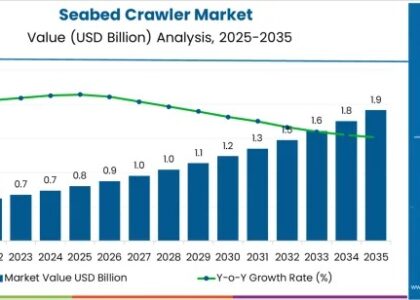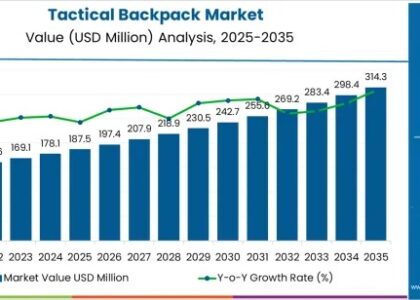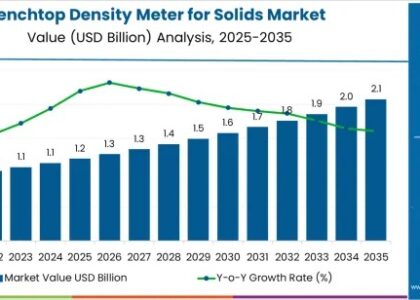
The global Generative AI Market is poised for exponential growth, projected to grow from USD 18,791.2 million in 2025 to USD 275,444 million by 2035, reflecting a compound annual growth rate (CAGR) of 30.8% over the forecast period. This remarkable surge is being driven by the integration of generative AI in personalized content creation, marketing automation, and the revolutionization of research and development processes across sectors. Organizations are leveraging generative models to streamline creative workflows, produce human-like text, imagery, and audio, and enhance decision-making in fields ranging from entertainment to healthcare and manufacturing. The increasing availability of cloud computing, advancements in large language models, and growing demand for automation in design, writing, coding, and simulation are reinforcing the foundational pillars of this burgeoning market.
The industry is undergoing a paradigm shift as businesses integrate generative AI tools into their operations to accelerate time-to-market, cut down costs, and scale personalized customer experiences. From chatbots that deliver conversational intelligence to generative design software that simulates complex engineering solutions, the application spectrum of generative AI is expanding rapidly. Personalized marketing campaigns, AI-generated video content, and synthetic media in advertising and entertainment are opening up new revenue streams. Moreover, AI is playing a pivotal role in pharmaceutical and biotech R&D by enabling faster drug discovery, simulating protein structures, and predicting molecular interactions. As ethical AI frameworks evolve, governments and companies are aligning their AI deployments with fairness, transparency, and privacy regulations, further enhancing the credibility and long-term viability of the generative AI landscape.
Get Ahead with Our Report: Request Your Sample Now!
https://www.futuremarketinsights.com/reports/sample/rep-gb-17547
Key Takeaways:
The generative AI market is being shaped by several critical drivers. First is the soaring demand for real-time, scalable content production across marketing, journalism, and social media platforms. Businesses are adopting AI tools to generate content at scale, ranging from email drafts and ad creatives to blog posts and product descriptions, thus reducing the dependency on manual labor and significantly enhancing output efficiency. Second, the integration of generative AI in software development is streamlining coding processes, enabling developers to write, debug, and document code faster. This is significantly reducing software development lifecycles and improving innovation velocity across tech enterprises.
In the healthcare domain, generative AI is being deployed to synthesize patient data, simulate treatment outcomes, and design next-generation therapies, fueling major breakthroughs in precision medicine. Meanwhile, in the design and manufacturing space, generative algorithms are enabling engineers and architects to produce optimized design prototypes based on performance constraints and environmental inputs, revolutionizing workflows in automotive, aerospace, and construction sectors. Another pivotal factor is the growing availability of open-source foundation models and APIs, which is democratizing AI development and enabling startups and SMEs to build innovative generative solutions without the need for deep AI expertise.
Emerging Trends in the Global Market:
One of the most impactful trends shaping the generative AI market is the convergence of multimodal models, which allow for the generation of text, images, video, and audio from a single AI framework. This convergence is unlocking a new level of interactivity and creative synthesis, making AI-powered platforms more versatile and valuable across use cases. Another trend is the emergence of fine-tuned and domain-specific generative models, which are being tailored for industries such as legal, finance, and healthcare to meet specialized data requirements and compliance needs.
There is a rising focus on AI explainability and responsible AI, as enterprises and regulators seek to address concerns around bias, misinformation, and data privacy. Techniques like watermarking AI-generated content, implementing human-in-the-loop oversight, and adhering to model audit trails are gaining prominence. Furthermore, the growing trend of AI-as-a-service (AIaaS) is making generative tools more accessible to non-technical users, enabling marketing teams, educators, researchers, and HR professionals to leverage AI-powered platforms with minimal learning curves.
Significant Developments in the Global Sector: Trends and Opportunities in the Market
As competition heats up, companies are increasingly investing in proprietary foundation models, differentiated by their architecture, training data, and application focus. Startups and large firms alike are launching verticalized generative AI platforms for sectors such as education, e-commerce, gaming, and enterprise productivity. The market is also witnessing the integration of real-time feedback mechanisms, where generative models learn and improve based on user interaction and contextual refinement. Opportunities are growing in local language AI generation, particularly in multilingual markets like India, Africa, and Southeast Asia, where AI adoption is expanding to new digital users.
Cross-industry partnerships between tech providers, academia, and enterprises are creating collaborative ecosystems to train, test, and deploy generative AI models at scale. There is also strong potential in edge AI deployment, where lightweight generative models run directly on user devices, offering enhanced privacy and latency-free experiences for mobile applications, AR/VR environments, and smart wearables.
Recent Developments in the Market
The market has witnessed a surge in new product launches and strategic acquisitions. Leading AI firms have rolled out advanced text-to-video and text-to-music tools, pushing the boundaries of synthetic creativity. Enterprises are incorporating generative AI into enterprise suites, such as CRM platforms, document automation tools, and knowledge management systems. Educational institutions and publishing houses have begun integrating generative AI for curriculum design, test creation, and research automation.
Several governments have started drafting regulatory frameworks for generative AI, balancing innovation with ethical responsibility. Meanwhile, AI chipmakers are launching custom hardware accelerators optimized for training and inference of large-scale generative models, improving energy efficiency and processing speed.
Extensive Market Research: Complete Report and Findings
https://www.futuremarketinsights.com/reports/generative-ai-market
Competition Outlook
The generative AI market is highly competitive, dominated by global technology leaders, specialized AI startups, and enterprise software providers. The key competitive edge lies in the ability to develop scalable, secure, and domain-specific generative models with superior accuracy, speed, and data safety. Companies are increasingly focusing on open-source contributions, proprietary training data, and API-driven ecosystems to differentiate their offerings and attract developers and businesses alike.
Key players
Key players in the global generative AI market include OpenAI, Google DeepMind, Microsoft, IBM, Adobe, Stability AI, Anthropic, Cohere, Jasper AI, Copy.ai, Synthesia, Runway, and Amazon Web Services (AWS). These companies are advancing the state of generative models, building developer tools, and expanding access to enterprise-ready AI solutions through cloud platforms.
Key Segmentations:
The market is segmented by technology into generative adversarial networks (GANs), transformer-based models, variational autoencoders (VAEs), and diffusion models, with transformer-based architectures like GPT dominating the market share. By application, it includes content generation, code generation, image and video synthesis, drug discovery, design automation, and virtual assistants, with content generation and design automation witnessing the fastest adoption. Deployment types include cloud-based and on-premise solutions, with cloud deployment leading due to its scalability and accessibility. By end-user, the market is segmented into media and entertainment, BFSI, healthcare, automotive, education, and retail, with media and healthcare driving the most innovation. Regionally, North America leads in adoption, followed by Europe and a rapidly growing Asia-Pacific market, particularly in countries with strong digital infrastructure and AI investment policies.
About Future Market Insights (FMI)
Future Market Insights, Inc. (ESOMAR certified, recipient of the Stevie Award, and a member of the Greater New York Chamber of Commerce) offers profound insights into the driving factors that are boosting demand in the market. FMI stands as the leading global provider of market intelligence, advisory services, consulting, and events for the Packaging, Food and Beverage, Consumer Technology, Healthcare, Industrial, and Chemicals markets. With a vast team of 400 analysts worldwide, FMI provides global, regional, and local expertise on diverse domains and industry trends across more than 110 countries.
Contact Us:
Future Market Insights Inc.
Christiana Corporate, 200 Continental Drive,
Suite 401, Newark, Delaware – 19713, USA
T: +1-845-579-5705
For Sales Enquiries: sales@futuremarketinsights.com
Website: https://www.futuremarketinsights.com
LinkedIn| Twitter| Blogs | YouTube





